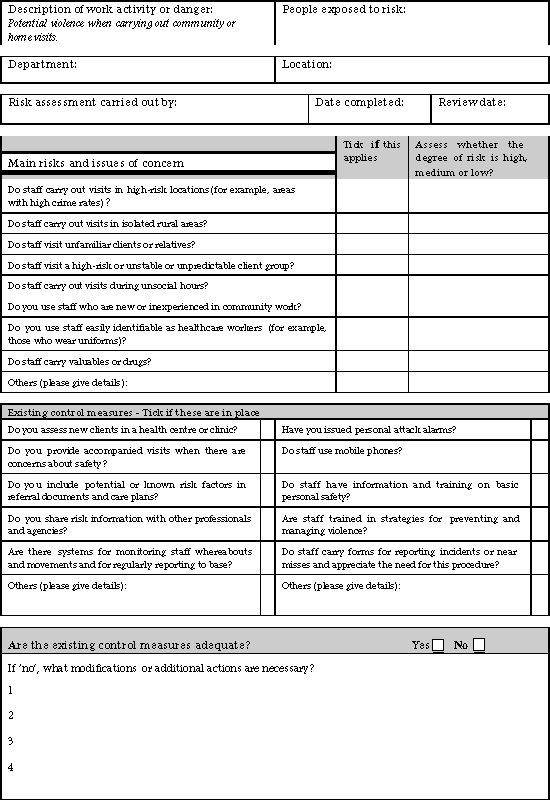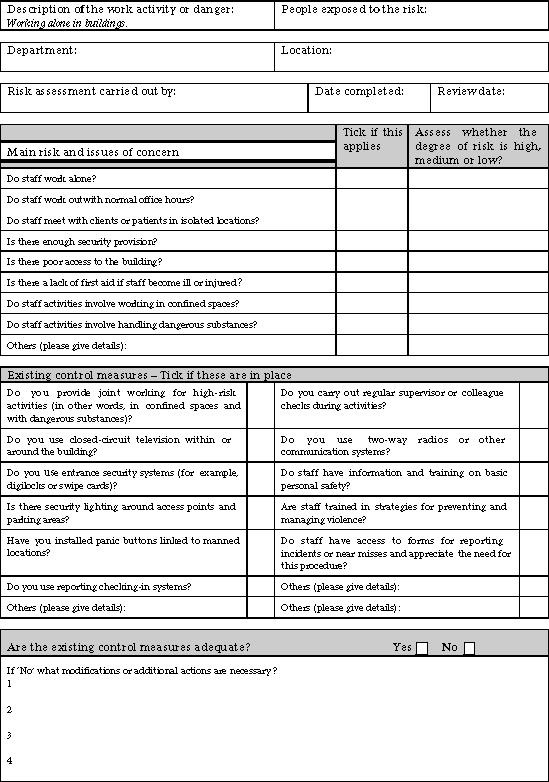Managing Health at Work Partnership Information Network (PIN) Guideline
This Guideline emphasises the need for employers to promote and support employee health and wellbeing and includes sections on issues that affect the health and safety of staff in their everyday work.
MANAGING HEALTH AT WORK
Annex 1
Identifying lone workers
Staff group |
Example occupations |
|
1 |
Staff working alone in fixed establishments |
|
2 |
Staff working outwith normal work hours |
|
3 |
Mobile workers working away from their fixed basestaff |
|
Annex 2
Sample risk assessment for domiciliary visits
Annex 3
Sample risk assessment for working alone in buildings
APPENDIX 5.C
References
Croner |
The A - Z Guide to Health and Safety, Croner Group Ltd, Surrey, 2001, Product Code EHS |
Health and Safety Executive |
Working alone in safety: Controlling the risks of solitary work, HSE Books, London, 1998, ISBN 0717615073 Also available at: http://www.hse.gov.uk/pubns/indg73.pdf |
Recommended further reading
Royal College of Nursing and the NHS Executive |
Safer Working In The Community: A Guidefor NHS Managers and Staff on Reducing theRisks from Violence and Aggression, RCN, London, 1998, ISBN 187 385 2304 |
The Suzy Lamplugh Trust |
Personal Safety at Work: Guidance For All Employees, The Suzy Lamplugh Trust, London 1998 (No ISBN) |
UNISON |
Working Alone: A Health and Safety Guide On Lone Working for Safety Representatives, UNISON, London, 2000, Product Code 1750 http://www.unison.org.uk |
There is a problem
Thanks for your feedback

